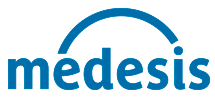Systemic delivery of P42 peptide: a new weapon to fight Huntington’s disease
Yoan Arribat, Yasmina Talmat-Amar, Alexia Paucard, Pierre Lesport, Nathalie Bonneaud, Caroline Bauer, Nicole Bec, Marie-Laure Parmentier, Lorraine Benigno, Christian Larroque, Patrick Maurel and Florence Maschat*
Background:
In Huntington’s disease (HD), the ratio between normal and mutant Huntingtin (polyQ-hHtt) is crucial in the onset and progression of the disease. As a result, addition of normal Htt was shown to improve polyQ-hHtt-induced defects. Therefore, we recently identified, within human Htt, a 23aa peptide (P42) that prevents aggregation and polyQ-hHtt-induced phenotypes in HD Drosophila model. In this report, we evaluated the therapeutic potential of P42 in a mammalian model of the disease, R6/2 mice.
Results:
To this end, we developed an original strategy for P42 delivery, combining the properties of the cell penetrating peptide TAT from HIV with a nanostructure-based drug delivery system (Aonys® technology), to form a water-in-oil microemulsion (referred to as NP42T) allowing non-invasive per mucosal buccal/rectal administration of P42. Using MALDI Imaging Mass Spectrometry, we verified the correct targeting of NP42T into the brain, after per mucosal administration. We then evaluated the effects of NP42T in R6/2 mice. We found that P42 (and/or derivatives) are delivered into the brain and target most of the cells, including the neurons of the striatum. Buccal/rectal daily administrations of NP42T microemulsion allowed a clear improvement of behavioural HD-associated defects (foot-clasping, rotarod and body weights), and of several histological markers (aggregation, astrogliosis or ventricular areas) recorded on brain sections.
Conclusions:
These data demonstrate that NP42T presents an unprecedented protective effect, and highlight a new therapeutic strategy for HD, associating an efficient peptide with a powerful delivery technology.
Arribat et al. Acta Neuropathologica Communications 2014, 2:86. See full article here.
